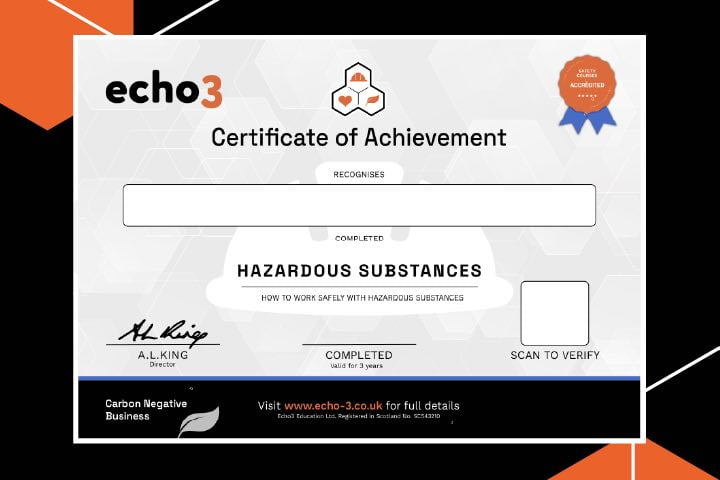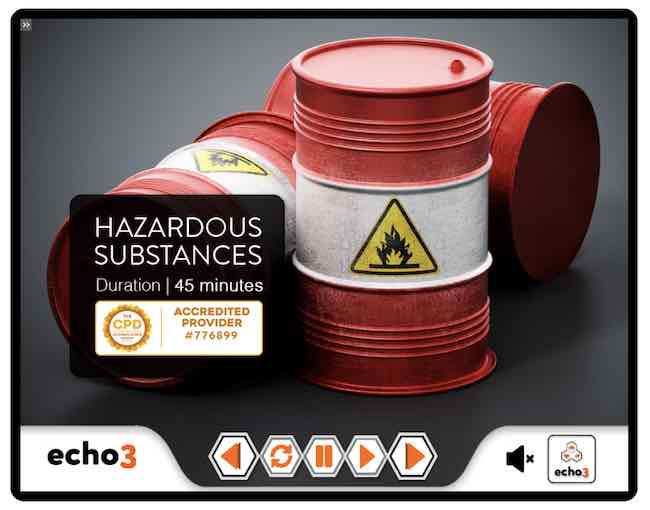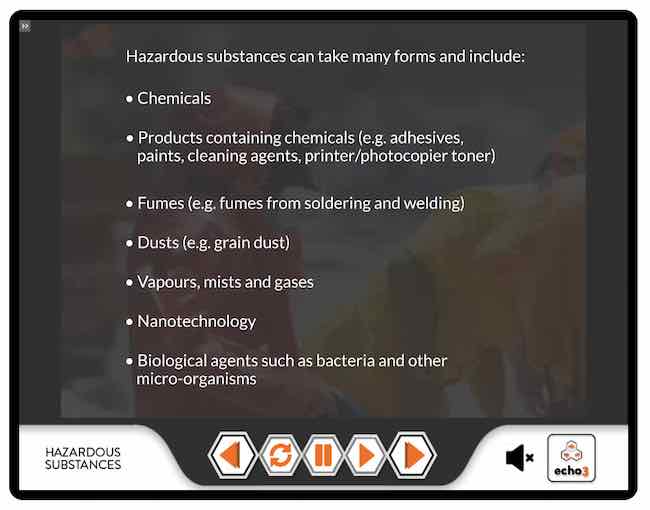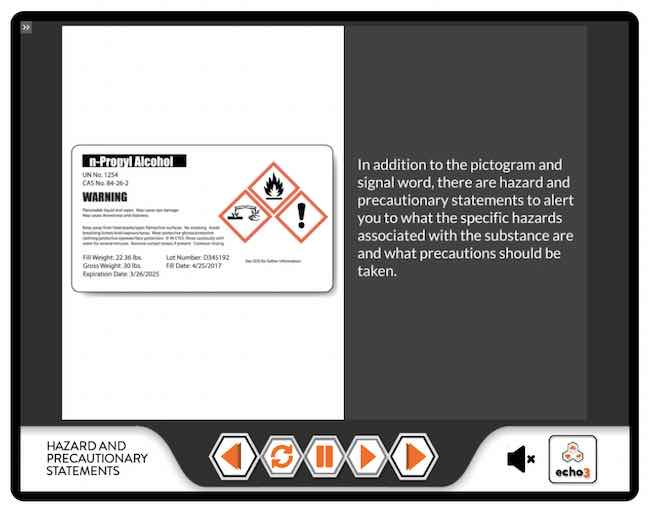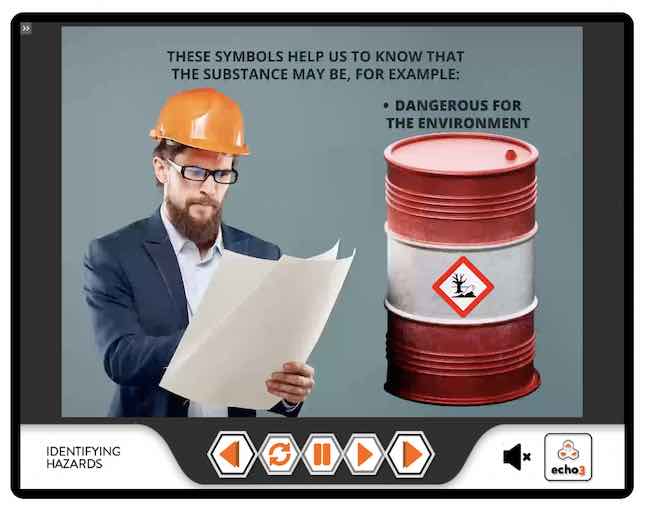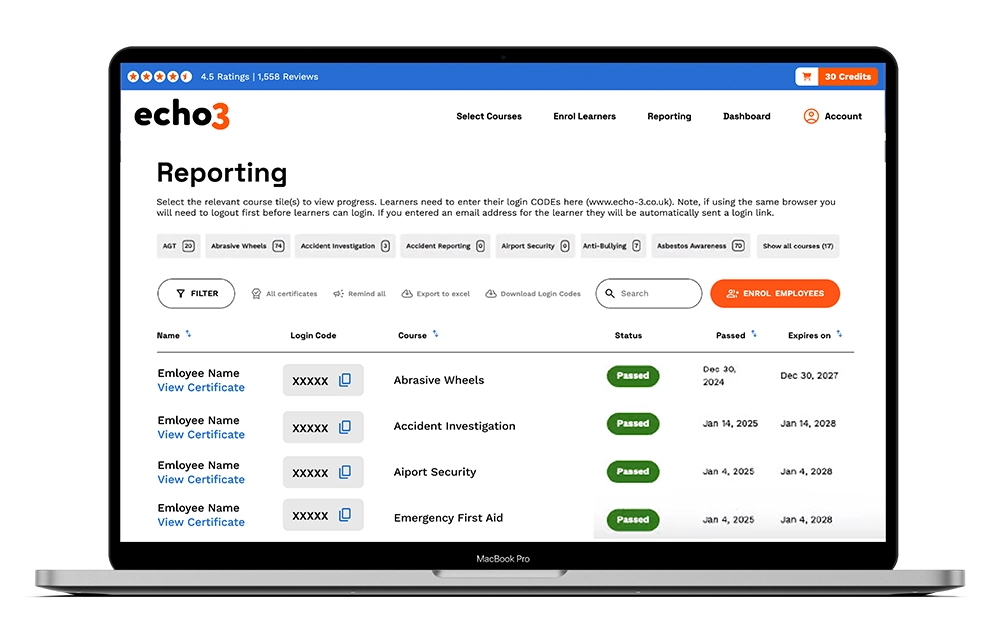Hazardous Substances Course
 This online Hazardous Substances training course is beneficial for all staff working where hazardous substances are present. A hazardous substance is defined under the COSHH regulation as ‘any substances that are potentially harmful to health’.
This online Hazardous Substances training course is beneficial for all staff working where hazardous substances are present. A hazardous substance is defined under the COSHH regulation as ‘any substances that are potentially harmful to health’.
Where present, COSHH regulations require employers to establish appropriate ‘control measures’ to keep staff safe. A key control measure is training.
This online Hazardous Substances training course provides the knowledge staff need to keep themselves and colleagues safe.
When hazardous substances are being transported, they are referred to as Dangerous Goods.
Hazardous Substances Course Content
UNIT 1 | HAZARDOUS SUBSTANCES OVERVIEW
In this first unit we look at the legislation relevant to the use of hazardous substances in the workplace, before outlining employer and employee responsibilities regarding safe working practices.
UNIT 2 | RECOGNISING HAZARDOUS SUBSTANCES
In this unit we look at how to identify different types of hazard and explain where to find information to support safe practice when working with hazardous substances. We also outline ADR classes and markings for those taking delivery of dangerous goods.
UNIT 3 | HEALTH RISKS
In Unit Three we explore the different ways hazardous substances can enter the body and the impact this can have on your health. We also look at control measures to minimise negative impact on your health.
UNIT 4 | WORKING SAFELY WITH HAZARDOUS SUBSTANCES
In this final unit we explain the control measures you and your employer can take to avoid harmful exposure to hazardous substances and reduce the risk of ill-health. We also look at how to respond in case of an emergency.
Hazardous Substances Certificate
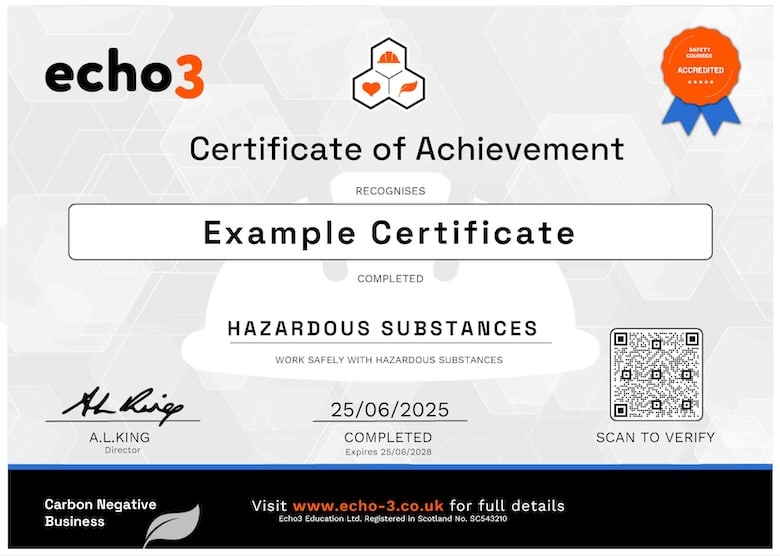
Download and Print Your Certificate
- Written in compliance with the Control of Substances Hazardous to Health (COSHH) Regulations
- Developed by qualified health and safety professionals
- Last Updated June 2023
- To gain the certificate you must complete the assessment which involves 20 questions.
- You can access our LMS any time to reprint certificates, check and set pass marks and act as proof of a commitment to ongoing legal compliance.
- The online Hazardous Substances certificate is valid for 3 years.
Course Preview
Echo3 courses include engaging motion-graphic video content, with full english subtitles
Reviews
How to Get Certified in 3 Steps
Individual Learners

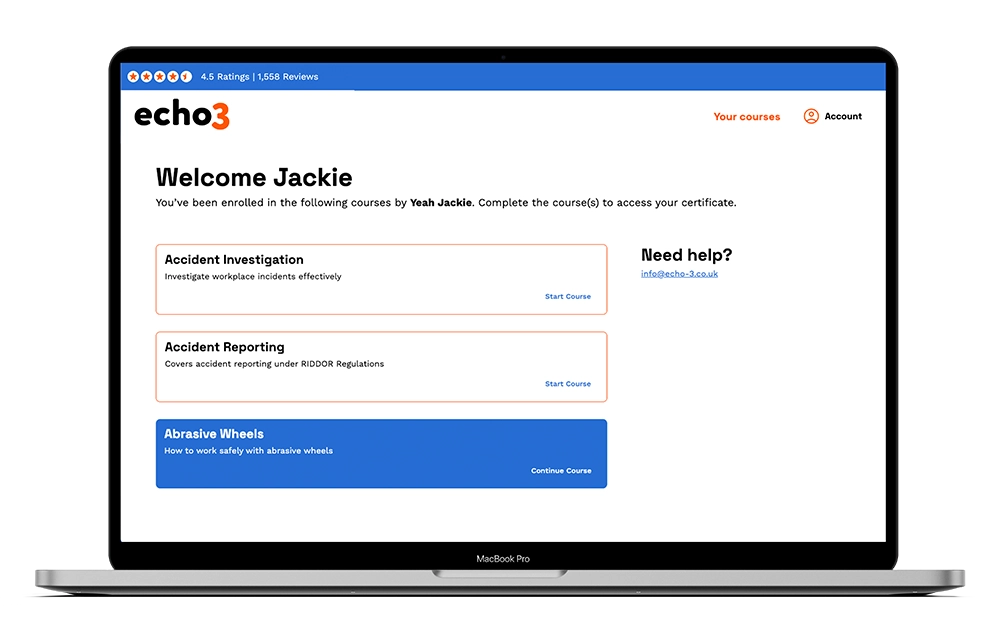
Benefits for Individuals
-
Engaging video-based content
-
Learner dashboard included
-
Instant access after payment
-
Free course retakes
-
Shareable digital certificate
 QR Code Certificate
QR Code Certificate




Bulk Buying Discounts
What are the course objectives?
 The learning objectives from the Echo3 online hazardous substances course include.
The learning objectives from the Echo3 online hazardous substances course include.
Provide a comprehensive understanding of different hazardous materials, their classifications, and the potential risks they pose in common workplace settings.
Firstly, provide staff with an understanding of the risks they face is a fundamental step in creating a safe workplace. This includes recognizing symbols, labels, and safety data sheets (SDS). Learners will also gain an understanding of their legal obligations and hazardous substances regulations.
Secondly, educate proper handling, storage, and disposal techniques for hazardous substances. This includes recognising the symbols, labels from the Globalised System from the Classification and Labelling of chemicals. Learning will also understand the purpose of safety data sheets (SDS).
Thirdly, emphasise safety protocols and preventive measures to minimise risks and accidents. This includes the importance of personal protective equipment (PPE), spill responses and understanding general emergency response procedures.
Ultimately, the course aims to empower individuals with the knowledge necessary to identify, handle, and mitigate risks associated with hazardous materials thereby making your workplace safer.
Who should take this course?
 Several job roles inherently involve exposure to hazardous substances, necessitating appropriate hazardous substances training. These roles include but are not limited to:
Several job roles inherently involve exposure to hazardous substances, necessitating appropriate hazardous substances training. These roles include but are not limited to:
Healthcare Professionals. Nurses, doctors, and lab technicians dealing with potentially harmful pharmaceuticals and medical chemicals.
Cleaners. Worker who use bleach or other chemicals to clean or disinfect. They could also potentially come into contact with sharps and bloodborne pathogens.
Construction Workers. Those handling paints, solvents, asbestos, and other construction-related chemicals.
Manufacturing Personnel. Workers involved in production processes using chemicals or substances with associated risks.
Laboratory Technicians/Researchers. Individuals dealing with various chemicals and laboratory materials.
Waste Management Personnel. Workers handling hazardous waste disposal.
Transportation Workers. Those handling, shipping, or transporting hazardous materials, including truck drivers and logistics personnel.
And, any individuals directly involved in handling, mixing, or transporting chemicals.
Note, when hazardous substances are being transported, they are referred to as Dangerous Goods.
What is a hazardous substance?
A hazardous substance is a substance or mixture of substances that are potentially harmful to health. Hazardous substances can take many forms and include:
- Chemicals
- Fumes
- Dusts
- Vapours, mists and gases
- Nanotechnology
- Bacteria and other micro-organisms
Virtually all workplaces use or contain hazardous substances of some kind. Some examples of hazardous substances include:
- Wood, grain and paper dust
- Glues, adhesives, solvents and paints
- Pesticides and chemical fertilisers
- Medicines and biological agents, bleach and other cleaning agents with a warning label
- Oils and fuels
- Printer/photocopier toner and inks
What are the 9 hazard symbols?
The 9 hazard warning symbols are used on packaging and containers to standardise and make clear the hazards posed substances.
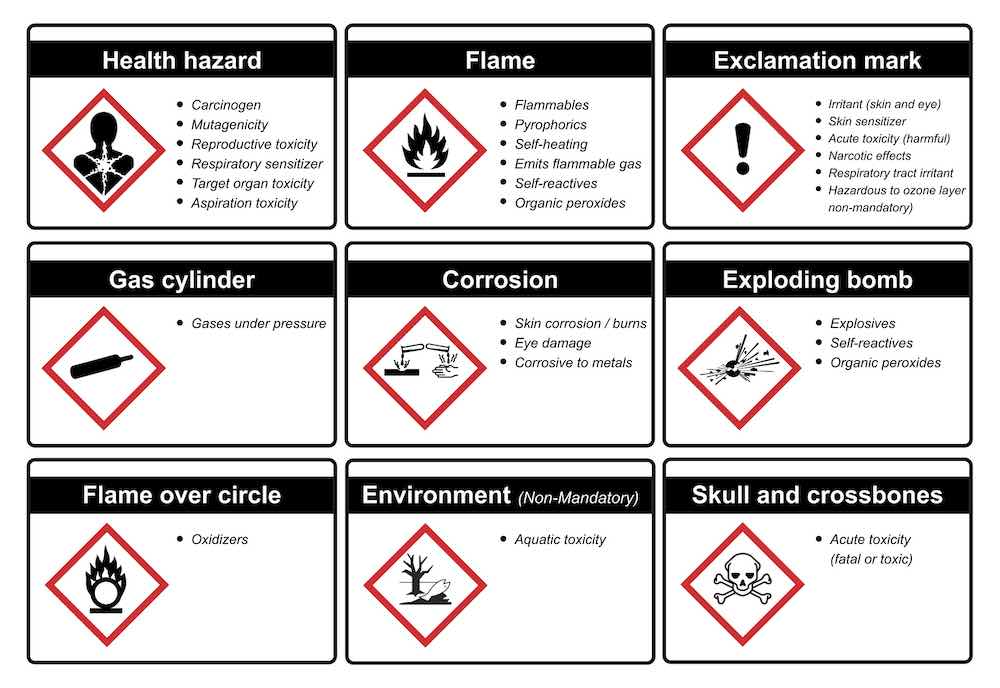
What are the health risks from hazardous substances?
What parts of the body can hazardous substances affect? The effect obviously depends on the specific substance and how it entered the body. Some typically effects are;
Brain & nervous system – Exposure to hazardous substances can affect the brain causing confusion, delirium and unconsciousness. Unusually high levels or prolonged exposure can, depending on the substance, interrupt the nervous system causing a variety of conditions such as seizures, drowsiness and numbness of the hands and feet.
Mouth – Swallowing hazardous substances can burn lips, mouth and food passages.
Eyes – Eyes are very sensitive organs and easily damaged. Exposure to hazardous substances can cause chemical burns, dryness and irritation.
Blood – Once in the body, hazardous substances may penetrate the bloodstream causing damage to tissues and vital organs of the body.
Skin – Certain hazardous substances such as corrosives may be absorbed through the skin and cause burns. Solvents and detergents may cause dermatitis.
Lungs – Exposure to certain hazardous substances can cause severe respiratory distress and a variety of lung diseases from asthma to cancer.
Heart – Exposure to hazardous substances can disturb the action or rhythm of the heart.
Liver/kidneys – The liver and kidneys can sustain damage as they struggle to filter the hazardous substance.
Digestive system – Hazardous substances in the digestive system can cause vomiting, abdominal pain and diarrhoea.






